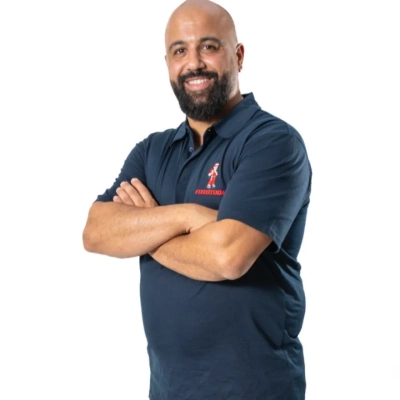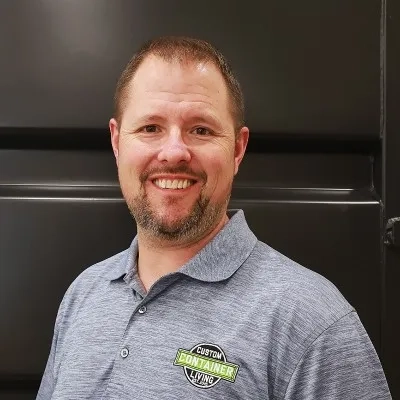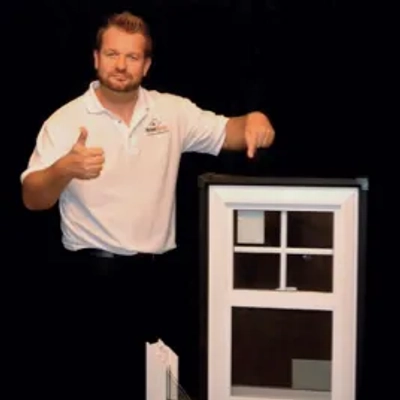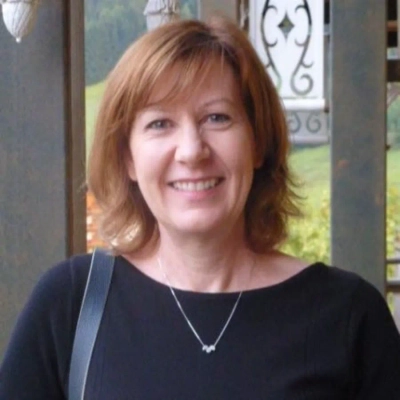How to Run Productive Project Meetings
Project meetings are crucial for team success, but they often fall short of their potential. This article presents expert-backed strategies to transform your project meetings into highly productive sessions. From innovative agenda structures to engaging participation techniques, these insights will help you maximize meeting efficiency and drive project outcomes.
- Replace Status Updates with Coordination Meetings
- Post Priorities Before Weekly Stand-Up
- Assign Meaningful Roles to All Attendees
- Share Clear Time-Boxed Agenda in Advance
- Start with Outcome-Focused Five-Minute Frame
- Use Visual Progress Updates for Focus
- Begin with Safety First Check-In
- Invite Only Key Stakeholders to Meetings
- Ask Targeted Follow-Up Questions for Depth
- Begin with Rapid Round-Room Priority Check
- Implement 15-Minute Criticism-Free Brainstorming Block
- Use Visual Progress Board for Instant
- Assign Red Flag Chair to Spot
- Open with Data First Approach
- Conduct On-Site Walk and Talk Meetings
- Involve Clients in Active Design Process
- Start with Specific Addresses for Engagement
- Use Red Flag Green Flag Check-In
- Begin with Silent Whiteboard Input Session
- Structure Meetings with 3-15-3 Format
- Display Countdown Timers for Time-Boxing
- Start with Real Customer Feedback
- Distribute Pre-Call Prep Sheet to Attendees
- Use Parking Lot for Off-Topic Discussions
- Ask for Input and Recognize Team
Replace Status Updates with Coordination Meetings
At Muller Expo, we have replaced status updates with coordination meetings. When people come in, it’s first and foremost about the understanding that they are not there to report work, but to resolve one high-impact decision. We prepare a short document to circulate before the meeting, with context, options, risks, and what we are deciding that day. Done effectively, this flips the dynamic of the room. Now there is less airtime for passive updates and more energy for effective flows towards meaningful changes.
The result is simple: meetings have gone from 50 minutes of circling to 20 minutes of momentum. Engagement is off the charts because every participant understands they’re not there to speak, but to inform the decision. This approach is particularly effective in project environments that have multiple vendors and quick timelines, as it keeps our team moving together without the frills of update theater.
 Jamilyn Trainor
Jamilyn Trainor
Owner and Senior Project Manager, Müller Expo Services International
Post Priorities Before Weekly Stand-Up
Every Monday, before our Marketing team’s weekly stand-up, I post a prompt in our Slack channel asking everyone to share their top priorities for the week.
This simple step helps us come to the meeting prepared, making the conversation more focused and efficient. It also gives team members and managers a chance to review, ask questions, and surface any blockers ahead of time—so we’re not using valuable meeting minutes just figuring out what everyone’s working on.
While it might seem redundant to post updates and then discuss them, this approach ensures we hit the ground running and spend the meeting solving problems and moving work forward.
 Yessy Abolila
Yessy Abolila
Marketing Project Manager, Animoto
Assign Meaningful Roles to All Attendees
I’ve found that setting a “no spectators” rule upfront changes everything. In meetings, especially with cross-functional teams, it’s easy for some to sit back while others dominate. Instead, I assign small but meaningful responsibilities to everyone attending—like summarizing next steps, raising a red flag early if timelines slip, or even just being the devil’s advocate once per meeting.
One time at Spectup, during a critical fundraising strategy sprint, I asked one of our quieter team members to challenge any assumption they heard. What came out was a completely overlooked competitor angle that shifted our positioning just in time. This kind of inclusive engagement not only keeps everyone sharp but also surfaces better thinking. Meetings go from passive updates to active decision-making, which is exactly what founders and investors expect from us.
 Niclas Schlopsna
Niclas Schlopsna
Managing Consultant and CEO, spectup
Share Clear Time-Boxed Agenda in Advance
The single most effective technique I use to facilitate productive meetings is to share a clear, time-boxed agenda with all participants in advance.
Why This Works:
1. Sets Expectations: Everyone knows the meeting’s purpose, topics to cover, and how much time is allocated for each item.
2. Keeps Discussions Focused: With time limits for each topic, tangents are minimized and everyone stays on track.
3. Boosts Engagement: When participants see their input is valued and the meeting is structured, they’re more likely to contribute meaningfully.
4. Ensures Accountability: By listing owners for each agenda item, responsibilities are clear and follow-up is straightforward.
5. Saves Time: Meetings start and end on schedule, reducing fatigue and freeing up time for actual project work.
How to Implement:
1. Draft the Agenda: List 3-5 key topics, assign an owner to each, and allocate a specific time slot.
2. Share in Advance: Send the agenda at least a day before, so everyone can prepare.
3. Stick to the Schedule: Use a timer or ask a team member to be the timekeeper.
4. Summarize Action Items: End with a quick recap of decisions and next steps, with assigned owners.
 Anurag Bhagsain
Anurag Bhagsain
Founder, Interactico
Start with Outcome-Focused Five-Minute Frame
My go-to technique in project meetings is something we call “the 5-minute frame”—the first five minutes of any meeting are used strictly to recap outcomes, not tasks. Instead of jumping into status updates, we ask: “What did we move last week that mattered to the client or campaign?”
This one shift has dramatically improved focus. It turns meetings from laundry lists into momentum checks. Our team knows we’re not there to report—we’re there to connect the dots between effort and outcome. It also gets everyone listening instead of waiting to talk.
One example: during a website revamp for a fintech brand, we started each sprint meeting with analytics from the new feature rollouts. It reframed the discussion from “Did we finish the banner?” to “That new banner increased clickthroughs by 17%.” Developers and creatives alike got re-energized because they saw their work working.
Keeping it results-first has helped reduce meetings by 20%, while raising accountability and energy levels.
 Eugene Leow Zhao Wei
Eugene Leow Zhao Wei
Director, Marketing Agency Singapore
Use Visual Progress Updates for Focus
Running a roofing company across multiple Texas cities taught me that the “photo progress update” method keeps everyone laser-focused during project meetings. We start each meeting by showing drone photos from active job sites, which immediately shows real progress or reveals problems that need fixing.
When we’re managing simultaneous projects in San Antonio, Austin, and Dallas, these visual updates eliminate the usual back-and-forth about “how things are going.” Instead of spending 20 minutes on status reports, we spend 5 minutes looking at actual roof installations and 15 minutes solving real issues like weather delays or material shortages.
The power is in the specificity – when our team sees that a Round Rock apartment complex is 60% complete while a San Marcos residential job hit a permitting snag, everyone knows exactly where to focus their energy. Our clients love getting these same photo updates throughout the day, which has helped us maintain our A+ BBB rating.
This works because construction people are visual problem-solvers. When you’re looking at actual work instead of talking about work, decisions get made faster and problems get solved before they become expensive delays.
 Carlos Yzaguirre
Carlos Yzaguirre
Managing Partner, Apex Roofing & General Contractors
Begin with Safety First Check-In
Running a multi-generational drilling company since the 1940s, I’ve learned that the “Safety First Check-In” technique keeps everyone laser-focused during our project meetings. Before diving into any agenda items, I start every meeting by asking each person to share one safety observation from their recent job sites – whether it’s a potential hazard they spotted or a safety win they witnessed.
During our recent geothermal drilling project where we had crews working 9 meters below ground, this check-in immediately surfaced that one crew noticed unstable soil conditions that could affect our timeline. Instead of finding this issue days later when it would derail the entire project, we addressed it in real-time and adjusted our drilling approach that same day.
This technique works because it forces everyone to mentally review their actual fieldwork before we start planning. People can’t zone out when they know they’ll need to contribute something concrete from their direct experience. The safety angle ensures contributions are always relevant to project success since unsafe conditions directly impact timelines and budgets.
The result is meetings where everyone arrives mentally prepared and stays engaged because they’re sharing real observations rather than sitting through abstract updates. Our project timelines became 30% more accurate once we started incorporating these real-time field insights into our planning sessions.
 Chelsey Christensen CWP
Chelsey Christensen CWP
Director of Operations, Crabtree Drilling
Invite Only Key Stakeholders to Meetings
When hosting a project meeting, I will only invite key stakeholders who are directly involved or have a decision-making role concerning the agenda. This approach makes the discussion focused and saves everyone’s time. I have implemented this strategy in the previous season at a wedding where several vendors were involved and the schedule was very tight. I restricted the meeting to the couple, the venue manager, the florist, and the caterer. Having six people in the room allowed us to discuss all aspects of setting up time and final menu selection without interruptions and off-topic discussions.
The small size of the group allowed us to go through the agenda easily. The meeting duration was slightly less than two hours, which saved approximately 45 minutes compared to past meetings when more individuals were involved. All the people present were very active because they knew their input would be counted and would directly influence the day. This reduced the number of follow-up emails and misunderstandings in the future. When meetings remain efficient, decisions are reached quicker, and the whole team can proceed with confidence because they are on the same page.
 Nicole Robins
Nicole Robins
Wedding Planner, Ever After Weddings
Ask Targeted Follow-Up Questions for Depth
After coaching C-suite executives for over 20 years and running meetings with teams managing revenues exceeding $200 million, I’ve learned that the “micro-interest questioning” technique transforms meeting dynamics. Instead of allowing people to simply present their updates and move on, I ask one targeted follow-up question that prompts deeper thinking: “What’s the biggest risk you haven’t mentioned yet?”
This approach isn’t about catching people off-guard—it’s about surfacing real issues before they become problems. When I worked with a Managing Director in financial services who was frustrated with surface-level team meetings, we implemented this approach. Her team transitioned from giving generic status updates to actually solving problems in real-time because people started preparing for substantive discussion.
The magic happens because it shifts everyone’s mental preparation. Team members stop thinking, “I’ll just report what’s done” and start thinking, “What are the real challenges I need to discuss?” Your meetings evolve into problem-solving sessions instead of information dumps.
The key is selecting one specific angle for each meeting—risks, assumptions, dependencies, or trade-offs. When people know you’ll delve deeper into something meaningful, they come prepared to engage rather than just report.
 Bill Berman
Bill Berman
CEO, Berman Leadership
Begin with Rapid Round-Room Priority Check
I always find it makes a difference when I begin a meeting by taking a rapid round-the-room priority check. I do not immediately start with updates or tasks, but I ask everyone to say what their most important focus of the day is in a single sentence. This basic practice establishes the course of action at the beginning and puts everyone in the mood. It also provides the less vocal people in the room with the opportunity to talk, and this facilitates the creation of a more inclusive environment.
The reason why this technique is effective is that it creates clarity and energy in the conversation. All of them are more conscious of what is important to the team at that given moment. It also assists in bringing to the fore any blockers that can be blown out of proportion. Meetings cease to be a list of updates and become more about problem-solving together. They do not feel that their efforts do not matter, and that is what keeps them engaged until the end.
Ever since I have been using this method, I have found that meetings are less tense, more focused, and in many cases shorter. The team departs with a common sense of direction and fewer loose ends. It creates a rhythm that is easy to follow and difficult to ignore. Once they are all on the same page within the first few minutes, the rest of the meeting is easy, and the energy spills over into the rest of the day.
 Caleb Johnstone
Caleb Johnstone
SEO Director, Paperstack
Implement 15-Minute Criticism-Free Brainstorming Block
Managing projects at EnCompass while juggling my studies at Coe College taught me that the “15-Minute Rule” transforms meetings completely. I start every session with a 15-minute criticism-free brainstorming block where nobody can question ideas or directions – just pure flow.
During our client portal development project, this technique uncovered the ticket system integration that became our biggest differentiator. In traditional meetings, someone would have immediately shot down the “complicated” ticketing idea, but the no-criticism window allowed the concept to develop fully. We ended up building something that helped get us on North America’s Excellence in Managed IT Services 250 List.
The magic happens because people’s brains work differently when they know they won’t be judged immediately. I’ve seen our most reserved team members contribute game-changing ideas during these windows. After implementing this across our project meetings, we cut our average project planning time by 40% while actually improving our outcomes.
The key is setting a visible timer and genuinely enforcing the no-criticism rule. Even positive feedback counts as an interruption during those 15 minutes.
 Scott Crosby
Scott Crosby
General Manager, EnCompass
Use Visual Progress Board for Instant
After 25 years managing tech rollouts across remote Australian locations—from HF radio installations to Starlink deployments—I’ve learned that the “visual progress board” technique surpasses all other methods for keeping meetings focused and engaging.
I use a simple whiteboard divided into three columns: “Stuck,” “In Progress,” and “Done.” Every team member physically moves their project cards between columns during the meeting. When we were scaling SpaceTek’s mounting kit production last year, this visual approach reduced our weekly coordination meetings from 45 minutes to 20 minutes while actually solving more problems.
The magic happens because people can instantly see bottlenecks and offer help without lengthy explanations. Instead of someone talking for 10 minutes about installation delays, they move their card to “Stuck” and write “roof access issue” underneath. Two other team members immediately jump in with solutions because they can clearly see the problem.
This technique helped us maintain zero missed delivery deadlines during our busiest quarter when we were handling caravan installs across three states. People stay engaged because they’re physically involved, and nobody loses focus when they can see exactly how their work connects to everyone else’s progress.
 Aaron Wroblewski
Aaron Wroblewski
Managing Director & Founder, SpaceTek
Assign Red Flag Chair to Spot
I have led hundreds of project meetings across multi-academy trusts, council-funded school upgrades, and emergency IT callouts. What keeps everyone engaged is not a bigger agenda, but giving someone the specific job of calling out blind spots. We call it the Red Flag Chair.
Before every meeting, one person is pre-assigned to be the “red flag.” Their job is to interrupt if anything sounds vague, under-resourced, or overly optimistic. This works especially well with school projects, where deadlines are tight and contractors tend to promise a bit too much.
The Red Flag Chair is not there to be difficult; they are there to protect the timeline. Knowing someone has permission to speak up without needing consensus means the room listens more closely. People stay sharper. They do not drift.
We rotate the role every meeting. Even junior techs take a turn. It changes the energy in the room because everyone knows someone is watching for the details they might miss. That keeps meetings short and decisions more grounded.
 Mark Friend
Mark Friend
Company Director, Classroom365
Open with Data First Approach
After 30+ years in transportation logistics and running thousands of project meetings at AFMS, I use the “Data First, Decisions Second” approach. I start every meeting by putting our client’s actual shipping data on screen – real numbers showing current costs, problem areas, or savings opportunities.
During a recent contract negotiation for a major retailer, instead of opening with agenda items, I displayed their $2.3M annual shipping spend breakdown by service type. Everyone immediately saw that 60% was going to unnecessary overnight shipping, and within 10 minutes we had three actionable solutions instead of spending 30 minutes on background discussion.
The power is in specificity – when people see concrete numbers like “You’re losing $47,000 annually on Zone 8 shipments,” their brains shift into problem-solving mode instantly. Abstract topics like “shipping optimization” make people zone out, but real dollar amounts get finance, operations, and logistics teams all contributing ideas simultaneously.
This works because numbers force immediate prioritization. At AFMS, we’ve saved clients over $4.5 billion using this approach – when teams see actual financial impact from minute one, they stay engaged and focused on solutions rather than getting lost in process discussions.
 Mike Erickson
Mike Erickson
Founder & CEO, AFMS
Conduct On-Site Walk and Talk Meetings
Starting Wright’s Shed Co. at 16 taught me that the best project meetings happen on-site, not in conference rooms. I call it “walk and talk” – we literally walk the job site while discussing progress, challenges, and next steps.
When we’re building a custom garage in Utah, I’ll gather the crew right where the foundation is going in. Everyone can see exactly what we’re talking about when discussing drainage issues or material placement. No abstract conversations – we’re pointing at the actual problem or opportunity.
This eliminates about 80% of the “I thought you meant…” confusion that kills projects. Last month, during a large shed installation in Idaho, we caught a utility line conflict in 5 minutes that would have taken three separate phone calls and emails to resolve from an office.
The physical context forces everyone to stay focused because they can’t hide behind laptops or phones. Plus, decisions get made faster when you’re looking at the real thing rather than trying to interpret blueprints or photos.
 Dan Wright
Dan Wright
Co-Founder & CEO, Wright’s Shed Co.
Involve Clients in Active Design Process
After 30 years of managing architecture projects, I’ve discovered that the principle of “design with, not for” dramatically transforms meeting dynamics. Instead of presenting solutions to clients, I involve them in the actual design process during our sessions.
During our Shawnee Station Taproom project, rather than showing finished concepts, I had the owners sketch their ideal customer flow while we discussed sight lines and gathering spaces. They ended up redesigning the bar placement themselves when they realized their initial request would create bottlenecks. This collaborative approach turned a potentially contentious revision meeting into an energizing problem-solving session.
The magic happens because people defend ideas they helped create. When clients contribute to the solution, they become invested advocates rather than passive critics. Our revision requests dropped by approximately 60% once we started this approach, and clients actually look forward to design meetings instead of dreading them.
This approach works across any project type – whether it’s a homeowner sketching room relationships or a nonprofit team mapping their workflow needs. Give people a marker and ask them to show you their vision rather than telling them about yours.
 Dan Keiser
Dan Keiser
Principal Architect, Keiser Design Group
Start with Specific Addresses for Engagement
Having managed real estate teams across multiple companies and now running GrowthFactor, I’ve found the “Address First, Context Second” technique transforms meetings. Instead of starting with background or status updates, I begin every project meeting by literally putting addresses on screen – whether it’s potential store locations we’re evaluating or sites causing problems.
During our Party City bankruptcy evaluation for Cavender’s, we had over 800 locations to screen in 72 hours. Our first team meeting started with me putting up the 15 highest-priority addresses and asking, “Which of these sites would you personally shop at?” This immediately got everyone thinking like customers instead of analysts, and we completed site rankings in 20 minutes instead of spending an hour on methodology debates.
The benefit is instant mental engagement. When people see specific locations rather than abstract project phases, their brains switch from passive listening to active problem-solving. At my family’s retail business, meetings about “market expansion” would drag on for hours, but showing actual addresses in potential markets got everyone contributing ideas about traffic patterns, competition, and demographics.
This works because addresses force concrete thinking. Instead of discussing theoretical site selection criteria, people start visualizing real customers driving to real locations, which is exactly the mindset needed for productive retail decisions.
 Clyde Christian Anderson
Clyde Christian Anderson
CEO & Founder, GrowthFactor
Use Red Flag Green Flag Check-In
My preferred method would be the ‘Red Flag, Green Flag’ Check-In. At the start of each meeting, I ask everyone to quickly share either a red flag (such as a concern or a blocker) or a green flag (a win or positive development).
One unique benefit is what I call signal clarity. Instead of waiting until problems escalate or letting small victories go unnoticed, this method gives us an immediate read on the team’s collective pulse. It helps me spot patterns early—and address them before they become critical roadblocks. It has transformed meetings from passive status updates into dynamic problem-solving sessions.
 Brandon George
Brandon George
Director of Demand Generation & Content, Thrive Internet Marketing Agency
Begin with Silent Whiteboard Input Session
I use what I call a “silent whiteboard start.” At the start of each project meeting, I have everyone silently jot down one concern and one win, and post them on a common board. No small talk, no debate, just two minutes of silent writing. Then I read each note aloud in no particular order. It essentially resets the room. It breaks the norm of seniority speaking over other voices and creates a space for those who normally wouldn’t speak.
This technique helped us identify a problem we had overlooked in a $65,000 rollout project across five sites. An inconsistency in the second shift reports was identified by a newer member of the team. None of that had been included in a briefing or update. Reports were uploading a bit late, and the client thought the job was never done. We were able to modify the workflow the same day and avert a potential rework. Without that quiet beginning, that input would have remained obscured.
 Steven Bahbah
Steven Bahbah
Managing Director, Service First Plumbing
Structure Meetings with 3-15-3 Format
After nearly two decades in construction and custom home building, I’ve found that the ‘3-15-3’ meeting structure consistently delivers the best results for keeping project meetings focused and productive.
Here’s how it works: We spend 3 minutes reviewing the previous meeting’s action items, 15 minutes discussing current challenges and progress, and 3 minutes establishing clear next steps. This simple framework has transformed our efficiency at Custom Container Living.
The beauty of this approach is threefold. First, it forces everyone to come prepared – team members know they have limited time to present their updates. Second, the strict timeboxing prevents the common problem of meetings dragging on without clear outcomes. Finally, bookending the discussion with review and next steps ensures accountability.
I’ve seen this technique cut our meeting times by 40% while actually improving follow-through. For example, when we were planning our new container home manufacturing facility, these structured meetings helped us identify and resolve potential bottlenecks before they became issues. What previously might have taken a 90-minute meandering discussion now gets accomplished in a focused 21-minute session.
The key is consistency – we use this format for every project meeting, whether it’s with our internal team, contractors, or clients. It’s become such an effective tool that our team now naturally thinks in this structured way even during informal discussions.
I’d be happy to share more specific examples of how we’ve implemented this approach across different types of projects and the measurable results we’ve achieved.
 Robert Wagoner
Robert Wagoner
President & Founder, Custom Container Living
Display Countdown Timers for Time-Boxing
Having built and scaled multiple tech companies over 30+ years, I’ve learned that **time-boxing with visible countdown timers** is the most effective technique for productive meetings. I put a large digital timer on screen showing exactly how much time remains for each agenda item, and when it hits zero, we move on regardless of where we are in the discussion.
When we were developing Kove:SDM™ with partners like Red Hat and Swift, our technical review meetings used to spiral into 3-hour debates about implementation details. Once I started using 15-minute segments with visible timers, our team became laser-focused on presenting the core issue and proposed solution upfront rather than rambling through background context.
The psychological pressure of that countdown creates urgency that cuts through the usual meeting bloat. People stop giving lengthy explanations and start making their points directly. At Kove, this approach reduced our weekly engineering meetings from 2.5 hours to 45 minutes while actually improving our decision quality.
The unexpected benefit: team members now come prepared with concise summaries because they know they won’t get extra time to figure things out on the spot. Our partnership meetings with enterprise clients like Swift now consistently finish early with clear next steps instead of the endless technical discussions that used to eat up entire afternoons.
 John Overton
John Overton
CEO, Kove
Start with Real Customer Feedback
As CEO of HomeBuild Windows, I’ve managed hundreds of installation projects across Chicago, and one technique consistently keeps my project meetings productive: **Start with the homeowner’s voice**. I begin every meeting by reading actual customer feedback from our recent projects – whether it’s Lauren Schulze praising our communication or Kathy Erlenbaugh noting how we cleaned up thoroughly after installing 17 windows in one day.
This immediately shifts everyone’s focus from internal processes to customer impact. When my installation crews hear real feedback about their work, they naturally start problem-solving around customer experience rather than getting bogged down in technical details. During our recent project timeline discussions, starting with a customer’s concern about scheduling immediately got the team brainstorming solutions instead of debating procedures.
The benefit is immediate accountability and engagement. When Paulette Whitfield’s review mentioned pricing transparency issues, my whole team understood exactly what needed fixing without lengthy explanations. People stay focused because they’re hearing directly from the customers who pay our bills, not abstract project metrics that feel disconnected from real results.
 Steve Mlynek
Steve Mlynek
CEO & Founder, HomeBuild Windows, Doors & Sliding
Distribute Pre-Call Prep Sheet to Attendees
As someone who has conducted thousands of recruiting meetings across 13 years in the transportation industry, I strongly advocate for the “pre-call prep sheet” technique. Every attendee receives a one-page document 24 hours before the meeting containing three elements: the specific decision we’re making, the data they need to review, and one question they must be prepared to answer.
When we were facing challenges with a client’s driver retention last year, I sent our team the hire/quit ratios, exit interview themes, and asked each person to identify one process gap they had observed. Instead of the usual 45-minute rambling session, we had a focused 20-minute meeting where our social media manager identified that our job advertisements promised “home weekends,” but operations was scheduling Saturday deliveries.
The effectiveness of this approach isn’t just in the preparation—it’s that people can’t disengage when they know they’ll be called upon for their specific insight. Our client meetings were reduced from an average of 38 minutes to 22 minutes, and we actually solve problems instead of just discussing them.
This method works because it compels everyone to think before they speak rather than thinking while they speak. When someone has to answer “What’s the biggest bottleneck in our current driver onboarding process?” they come prepared with real observations instead of improvising on the spot.
 Lane Williams
Lane Williams
Founder & CEO, Fusion Now
Use Parking Lot for Off-Topic Discussions
Project managers, one effective technique for facilitating productive meetings is the “parking lot” approach. Before the meeting, have a dedicated space like a whiteboard or document for capturing topics that arise but are not on the agenda. When an off-topic discussion emerges, quickly “park” it in the designated area to revisit later. This allows you to acknowledge the point, maintain focus on the current agenda item, and ensure important tangents receive proper attention without derailing the meeting flow. The “parking lot” promotes engagement by giving attendees a voice while maintaining structure and momentum.
 Mahee Chouhan
Mahee Chouhan
Content and Digital Marketing Manager, Mitt Arv
Ask for Input and Recognize Team
The truth is, no one really likes meetings. They’re just one of those necessary evils of work life. For project managers in particular, meetings are an integral part of your process. There is nothing like getting your team all in one room to brainstorm and work out the kinks in a project.
To keep everyone engaged, it’s important to include everyone in the process. One way to do this is by asking for everyone’s input. Often, members of your team may be happy to just sit back and let others contribute. When asked specifically for input, they may surprise themselves by contributing something valuable to the meeting.
I generally ask my team to submit any questions or comments they want to make sure are covered well in advance of when the meeting is scheduled. It’s a great way to get everyone thinking about things beforehand. It gets their creative juices flowing.
Besides that, making sure everyone in the meeting is recognized for the part they play in the project and that they feel heard is really important.
 Janet Milton
Janet Milton
Product Technologist, Simba Sleep
